- HOME
- RESEARCH
- Research Clusters
- Advanced Biomedical Evaluation System
RESEARCH
Advanced Biomedical Evaluation System
Research Keyword: Ultrasound, heart sound, wearable, machine learning, automatic evaluation
In this research cluster, our goal is to sense biomedical objects and areas that have been impossible to measure by traditional methods. To realize it, we apply our specialties, flexible ultrasonic sensors, high-performance electric circuits, visualization technology, and machine learning.
The sol-gel composite ultrasonic sensors developed by Dr. Tanabe and Prof. Kobayashi are flexible and extremely thinner than conventional ultrasonic sensors, and it could be an effective patch type sensor. Dr. Yamakawa is developing electronic circuit devices that enables it to transfer echo signals to an analysis computer wirelessly.
In our team, we are developing patch-type wireless ultrasonic sensors. In our goal, the measurement results will be automatically classified into three cardiac abnormalities: coronary artery disease (CAD), myocardial infarction (MI), and congestive heart failure (CHF), by machine learning by Dr. Acharya and Mr. Oh, Ngee Ann Polytechnic, Singapore, with advice from MD Tan, National Heart Centre Singapore, Singapore.
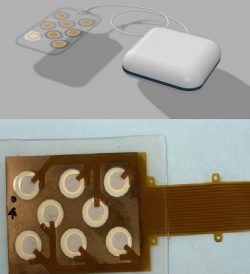
Cluster members
-
 CoordinatorMakiko KOBAYASHI Website
CoordinatorMakiko KOBAYASHI WebsiteProfessor
Faculty of Advanced Science and Technology, Kumamoto UniversityJapan -
 Toshitaka YAMAKAWA Website
Toshitaka YAMAKAWA WebsiteAffiliate Researcher
Faculty of Advanced Science and Technology, Nara Institute of Science and Technology (NAIST)Japan -
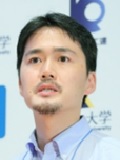 Masayuki TANABE Website
Masayuki TANABE WebsiteAssistant Professor
Faculty of Advanced Science and Technology, Kumamoto UniversityJapan -
 U Rajendra ACHARYA Website
U Rajendra ACHARYA WebsiteProfessor (Artificial Intelligence in Healthcare)
University of Southern Queensland, Physics and Computing
*IROAST Distinguished ProfessorAustralia -
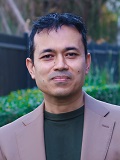 Prabal Datta BARUA Website
Prabal Datta BARUA WebsiteAdjunct Professor
University of Southern Queensland
Ph. D Student
Graduate School of Science and Technology, Kumamoto UniversityAustralia/Japan -
Oliver FAUST
Associate Professor
Faculty of Science and Engineering, Anglia Ruskin UniversityUK -
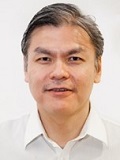
Achievement
Publications
- 2025
-
-
- Fibromyalgia Detection and Diagnosis: A Systematic Review of Data-Driven Approaches and Clinical Implications
-
IEEE Access, 13, 25026 - 25044 (2025)*Supported by "IROAST Publication Support Programs FY2024"
-
- 2024
-
-
- Artificial intelligence assisted tools for the detection of anxiety and depression leading to suicidal ideation in adolescents: a review
-
Cognitive Neurodynamics, 18(1) 1-22 (2024)
-
- Probabilistic-based electricity demand forecasting with hybrid convolutional neural network-extreme learning machine model
-
Engineering Applications of Artificial Intelligence 132, 107918, 2024
-
- Novel tiny textural motif pattern-based RNA virus protein sequence classification model
-
Expert Systems with Applications 242, 122781, 2024
-
- GCLP: An automated asthma detection model based on global chaotic logistic pattern using cough sounds
-
Engineering Applications of Artificial Intelligence, 127, Part A, 107184, 2024
-
- An expert system for automated classification of phases in cyclic alternating patterns of sleep using optimal wavelet‐based entropy features
-
Expert Systems, 41(5), e12939 (2024)
-
- 2023
-
-
- Automated detection of airflow obstructive diseases: A systematic review of the last decade (2013-2022)
-
Computer Methods and Programs in Biomedicine 241, 107746, 2023
-
- SchizoNET: a robust and accurate Margenau–Hill time-frequency distribution based deep neural network model for schizophrenia detection using EEG signals
-
Physiological Measurement 44, 3, 035005 (2023)
-
- An explainable and interpretable model for attention deficit hyperactivity disorder in children using EEG signals
-
Computers in Biology and Medicine, 155, 106676 (2023)
-
- A Novel Attention based model for Semantic Segmentation of Prostate Glands using Histopathological Images
-
IEEE Access, 11, 108982 - 108994 (2023)
-
- FF-BTP Model for Novel Sound-based Community Emotion Detection
-
IEEE Access 11, 108705-108715 (2023)
-
- Innovative Fibromyalgia Detection Approach Based on Quantum-Inspired 3LBP Feature Extractor Using ECG Signal
-
IEEE Access 11, 101359-101372 (2023)*Supported by "IROAST Publication Support Programs 2023"
-
- Brain tumor detection and screening using artificial intelligence techniques: Current trends and future perspectives
-
Computers in Biology and Medicine 163, 107063, 2023
-
- Uncertainty quantification in DenseNet model using myocardial infarction ECG signals
-
Computer Methods and Programs in Biomedicine, 229, 107308, 2023
-
- Automated warfarin dose prediction for Asian, American, and Caucasian populations using a deep neural network
-
Computers in Biology and Medicine 153, 106548, 2023
-
- An Explainable Deep Learning Model to Prediction Dental Caries Using Panoramic Radiograph Images
-
Diagnostics, 13 (2), 226, 2023
-
- Thin, flexible, and biocompatible medical ultrasound array transducer using a sol–gel composite spray technique
-
Jpn. J. Appl. Phys. 62 SJ1034, 2023
-
- Automated detection of scaphoid fractures using deep neural networks in radiographs
-
Biocybernetics and Biomedical Engineering, 122, 106165, 2023
-
- Endoscopy, video capsule endoscopy, and biopsy for automated celiac disease detection: A review
-
Biocybernetics and Biomedical Engineering, 43, 1, 82-108, 2023
-
- FFCAEs: An efficient feature fusion framework using cascaded autoencoders for the identification of gliomas
-
International Journal of Imaging Systems and Technology, 33(2), 483-494, 2023
-
- Automated detection and screening of depression using continuous wavelet transform with electroencephalogram signals
-
Expert Systems, 40 (4), e12803, 2023
-
- 2022
-
-
- Role of Four-Chamber Heart Ultrasound Images in Automatic Assessment of Fetal Heart: A Systematic Understanding
-
Informatics, 2022, 9(2), 34
-
- Assessment of CT for the categorization of hemorrhagic stroke (HS) and cerebral amyloid angiopathy hemorrhage (CAAH): A review
-
Biocybernetics and Biomedical Engineering, 42 (3), 2022, 888-901
-
- Automated detection of ADHD: Current trends and future perspective
-
Computers in Biology and Medicine, 146, 2022, 105525
-
- Application of explainable artificial intelligence for healthcare: A systematic review of the last decade (2011–2022)
-
Computer Methods Programs in Biomedicine, 226, 2022, 107161
-
- Application of Photoplethysmography signals for Healthcare systems: An in-depth review
-
Computer Methods and Programs in Biomedicine, 216, 106677, 2022
Publications
Grants
Awards
2025 Kumamoto Tech Planter, Best award
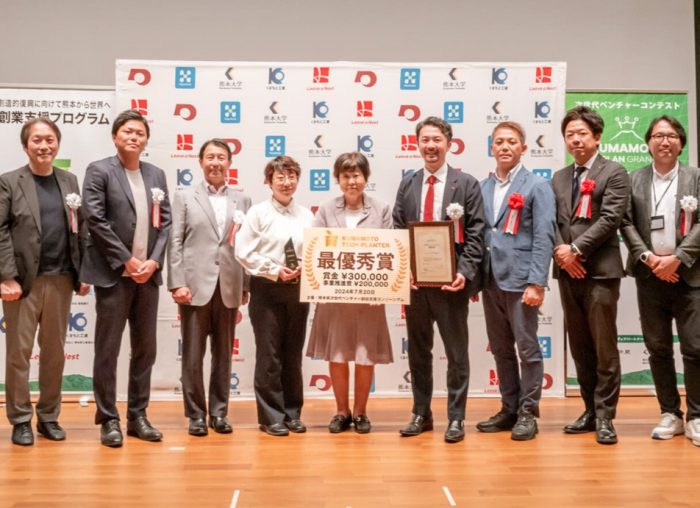
Activities
- Kobayashi and Tanabe visited a research institution of Prof. Acharya's lab in Australia to reaffirm the research structure and future tasks.
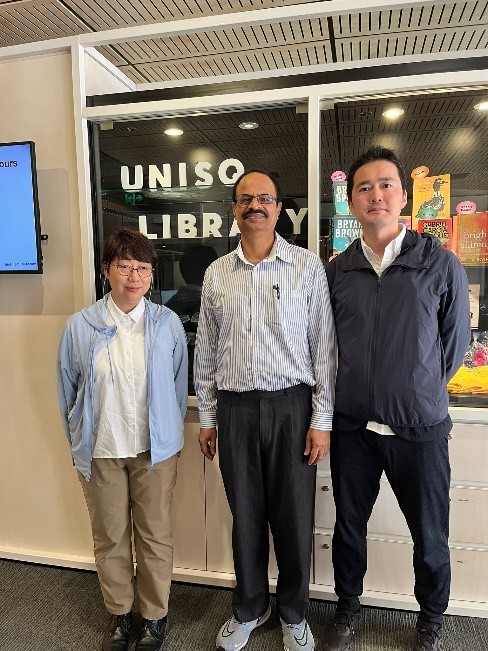
- Cluster of Young Researchers
-
- Ferroelectric Photovoltaics
- Next-Generation Design of Building Structures-DfX
- Low-Dimensional Molecular Electronics and Spintronics
- Development of extrachromosomal DNA control system for reprogramming drug-resistant cancer
- Development of Microbially-Aided Carbon Sequestration Technology
- Digital Plant Cell Biology
- Deep Learning for Hydrology
- Study of First-Generation Objects in the Universe with Radio Telescopes
- Separation, Synthesis, and Detection by Means of Ionic Solutes Handling
- Advanced Biomedical Evaluation System
- Environmentally Promising Processes for Medical and Skincare Nanomaterials
- Environmental Diagnosis on Earth Surface Systems
- Novel Cancer Medical Technology Using Liquid Biopsy
- Cluster of World-leading Researchers
-
- Development of Nano and Supramolecular Materials
- Plant Cell and Developmental Biology
- Nano-Organics and Nano-Hybrids
- Nano-medicine and Drug Delivery System
- Nano-medicine and Theranostics
- Structure and Dynamics of Materials Using Quantum Beams and Data-Driven Sciences
- Quantification of Three Dimensional Vascular Network
- Advanced Structural Materials
- Plant Stem Cells and Regeneration
- Microstructure Analysis and Grain Boundary Engineering
- Nano-materials for Energy Applications and Environmental Protection
- Micro- and Nanomechanics of Materials Science & Biological Systems




